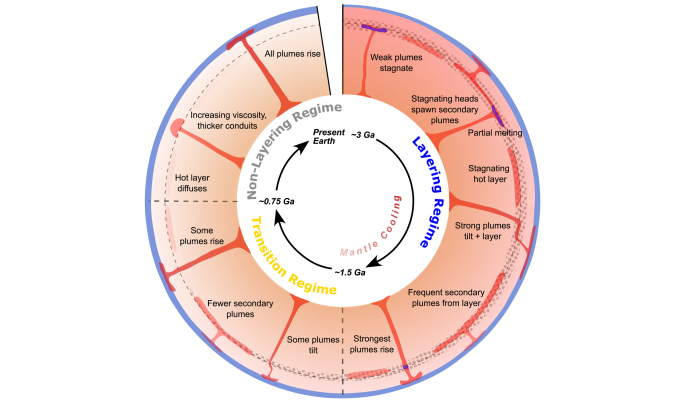The field of rock rheology may seem a bit ‘odd’ at first glance to those geoscientists who are vaguely familiarized with the topic of geodynamics. Often, rocks are considered massive and competent geomaterials that display a sudden (and sometimes violent) brittle failure (earthquake alert!). However, when considering the high temperatures and large timescale characteristics of most geo ...[Read More]
Applying for a PhD in Geoscience: To do or not to do
Fresh out of your bachelor’s degree, or more commonly these days, your master’s degree, it can be tempting to pursue your PhD as quickly as possible. While there are compelling reasons to dive straight in, rushing into a PhD might not be your best choice. To be or not to be a researcher? Before you start firing off applications, take a step back. Forget any expectations you had ...[Read More]
Phase transitions control plume layering during Earth’s secular cooling

Earth’s structure and dynamics have evolved quite a lot since its formation, and so has mantle dynamics and convection patterns changed along with it. It turns out that phase transition in certain mantle minerals can be an important driver of this change. Today, Ranpeng Li from GEOMAR Helmholtz Centre for Ocean Research Kiel, Germany explains how coupling geodynamic models with thermodynami ...[Read More]
One Ring to Rule Them All: The Geology of Middle-earth
Few fantasy worlds have captured the imagination of readers and viewers like J.R.R. Tolkien’s Middle-earth. Whether you first encountered it through The Lord of the Rings or the sweeping visuals of Peter Jackson’s films, chances are your eyes lingered on the same thing geologists can’t help obsessing over: the mountains. Towering, treacherous, mysterious — the Misty Mountains, the White Mountains, ...[Read More]



